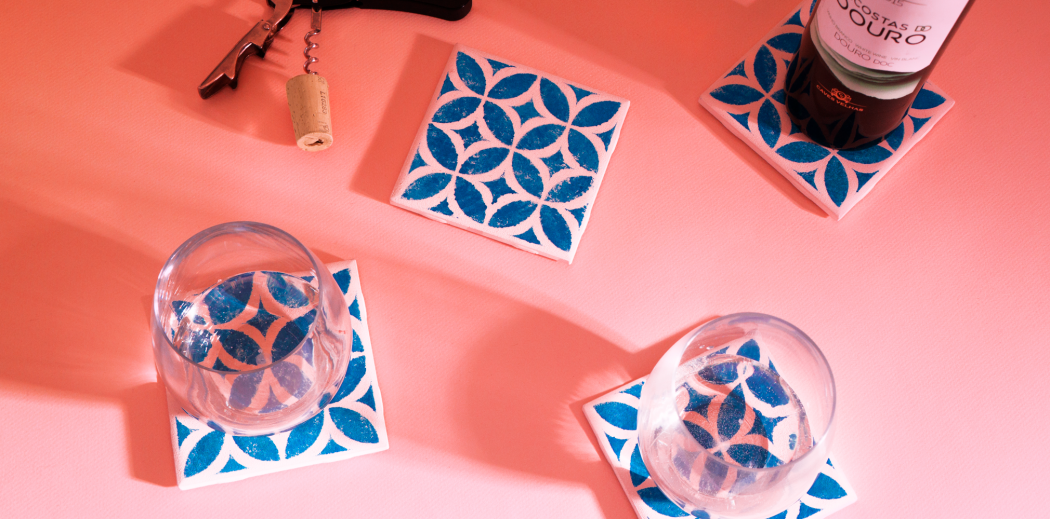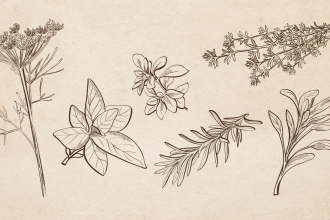Just like on the cover of this month’s magazine, beautifully hand-painted ceramic tile can be seen all over Portugal. From subway stations to churches to ordinary homes, these azulejos are a defining characteristic of the country’s architecture. The word azulejos actually has Arabic origins, but the practice of cutting solid-colored, polished tiles into mosaic patterns is believed to have originated in Seville, Spain in the 13th century. By the time the method came to Portugal, many of the tiles had geometric shapes hand painted onto them, rather than being cut to fit together. In more modern times, though, many of the painted tiles actually depict scenes from Portugal’s history.
In honor of this tradition, we decided to show you how to make your own azulejos so that you can bring a little piece of Portuguese culture into your own home. Plus, you can use them as coasters for setting down your glass of vinho!
WHAT YOU’LL NEED
▸ Unglazed ceramic tiles
▸ Acrylic paint in gloss finish
▸ Paint brushes
▸ Cork or felt backing (furniture pads will work too!)
▸ Glue
▸ Moisture-resistant, acrylic sealer in gloss finish
▸ Stencils, optional
HOW YOU’LL DO IT
PLACE your tile on a covered work surface.
SET your stencil on top of the tile, if using.
BRUSH over the stencil with your desired paint color, careful not to let it move while you’re painting.
REMOVE the stencil, careful not to smudge the paint.
WAIT at least one hour for the paint to dry fully.
SPRAY your tiles with acrylic sealer. Two coats is probably best. Allow to dry.
APPLY cork, felt or furniture pads to the back of your tiles.
ENJOY your new homemade azulejos coasters!








